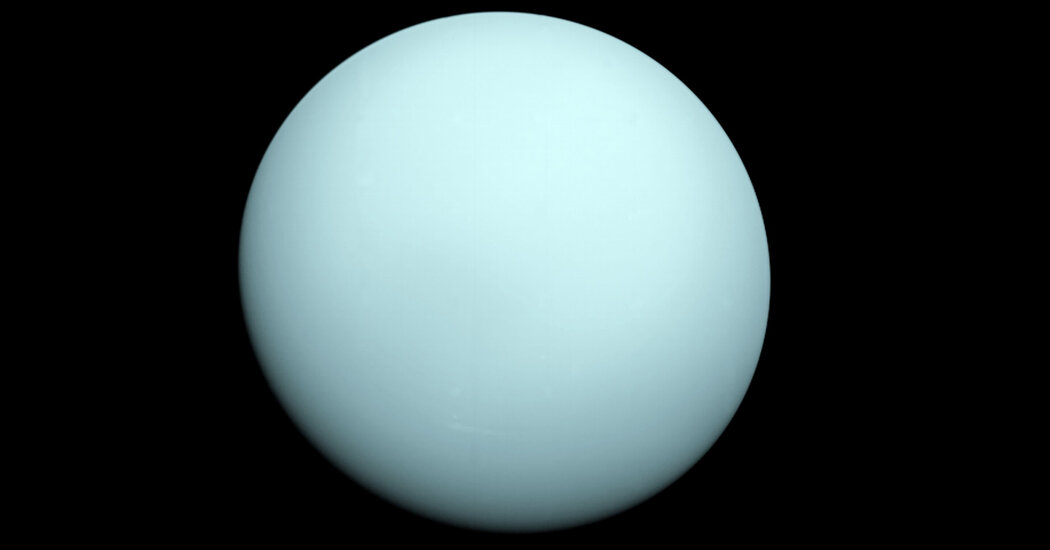Our understanding of Uranus might have been all wrong for nearly 40 years.
In January 1986, NASA’s Voyager 2 spacecraft zoomed past Uranus as part of a grand tour of the outer solar system. That flyby, lasting just five hours, remains to date the only visit to Uranus by a spacecraft from Earth, with much of our understanding of the planet coming from that brief encounter.
Peculiarly, as Voyager 2 soared about 50,000 miles above the planet, it found that Uranus was quite different from other worlds in the outer solar system. In particular, its protective magnetic field, known as a magnetosphere, was devoid of plasma, something prevalent around other planets.
“We observed this empty magnetosphere,” said Jamie Jasinski, a space plasma physicist at NASA’s Jet Propulsion Laboratory. And its radiation belts, regions of the planet’s magnetic field that trap high-energy particles, were surprisingly intense, something that “breaks current radiation belt theory,” Dr. Jasinski said.
Now we may know why. In a paper published Monday in the journal Nature Astronomy, Dr. Jasinski and his colleagues suggest that Voyager 2’s visit flyby occurred during an exceptional increase in solar activity, which caused shrinking of the planet’s magnetosphere. That created conditions at Uranus that occurred just four percent of the time in the data that the team analyzed.
“If we had arrived a week earlier, we would have had a completely different picture of Uranus,” Dr. Jasinski said.
Fran Bagenal, an astrophysics and planetary science professor at the University of Colorado, Boulder, and a member of the Voyager program’s plasma science team, said it was a “big surprise” when she saw Dr. Jasinski present the research at a conference this summer. “Why didn’t we see this?” she said. “I was kicking myself. It was completely out of the blue.”
